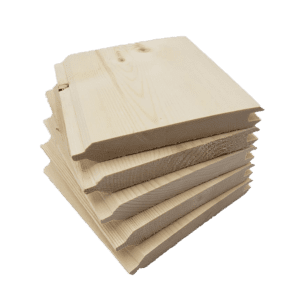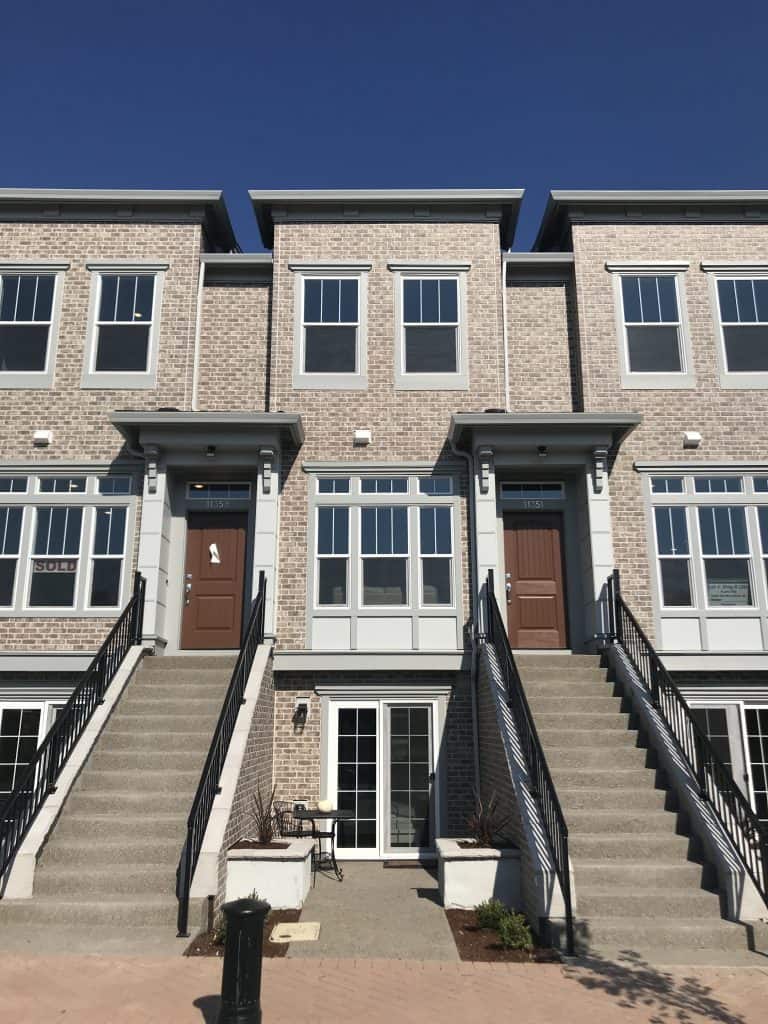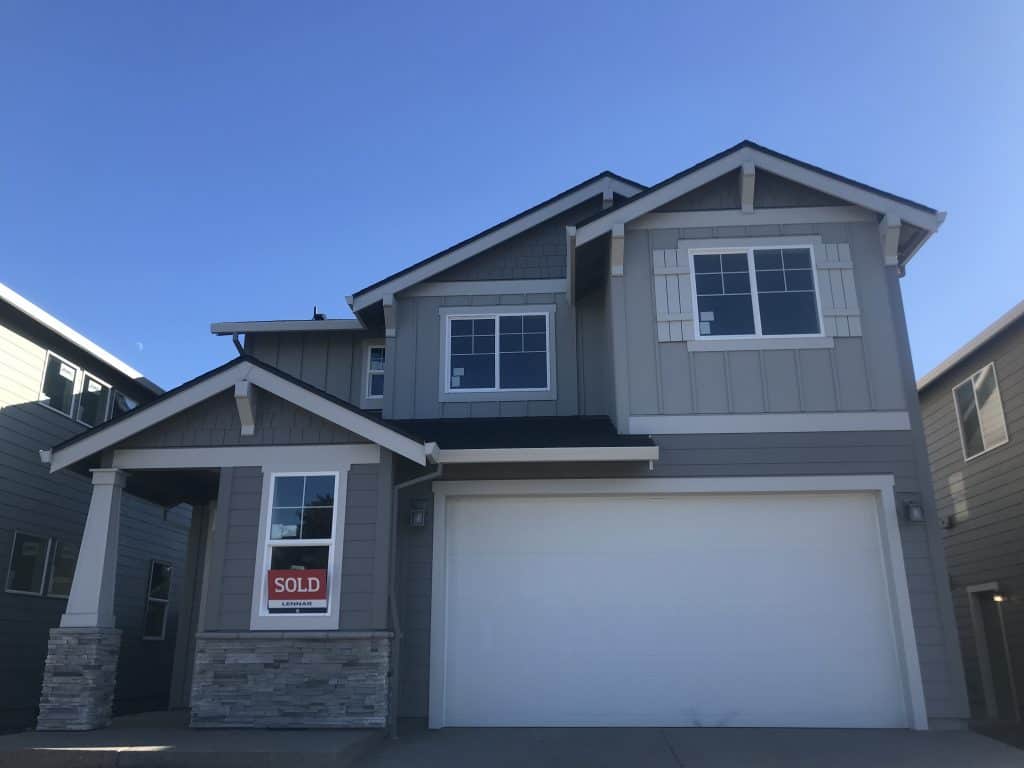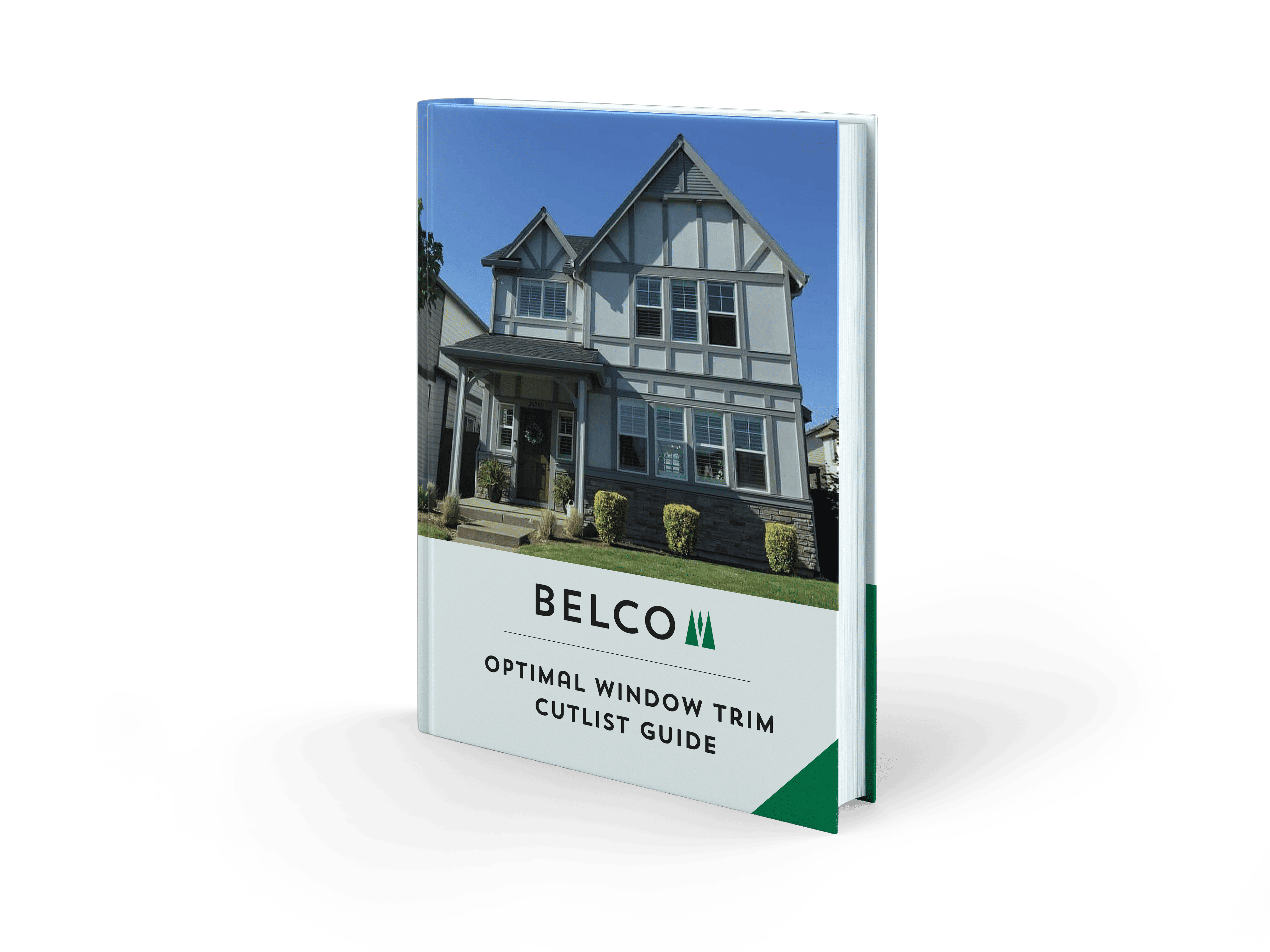Getting the best bang for your buck for garage door wrap
Garage door wrap is an often overlooked trim piece that deserves much more attention. It often gets the brunt of abuse for the garage area.
For example, car doors slamming, lawn care equipment coming in and out, truck mirror scraping, kids bike collisions and more means the garage wrap takes a beating.
In addition, wrap around garage doors is often in close contact with moisture from the cement floor and weather.
The best wrap for your garage will mean that a simple fresh coat of paint will put things right quickly and easily.
Material Choices
There are several options for garage door wrap that you should consider. Basically, it is between all real wood materials and manufactured products.
Real Wood For Garage Door Wrap
Real wood for garage wrap has some great advantages. Not only is it strong, but repairs are easy to do. Wood is available in multiple sizes. Real wood doesn’t need unusual tools to be cut. It is lightweight and versatile.
There are two categories. Cedar and Primed White Wood.
Primed White Wood
Primed white wood is by far the best choice for production builders and anyone with a budget unless quality is sacrificed by the manufacturer.
PWW is typically offered in 10′ to 20′ lengths, therefore there is minimal to no waste. It’s a great option for the bottom line.
A great feature of PWW is that the ends will absorb paint the same way the face sides do, creating a beautiful paint finish.
In the past, PWW has not had a good reputation for longevity. Wood is vulnerable to decay and rot without preservatives.
Preservative Treated Belco XT® Trim solves this issue.
Belco first kiln dries the raw wood for an optimum moisture level. Then each board is treated with Wolman® AG by Lonza. Once dry, each board is coated with a great primer paint then baked in an oven for a strong, decay-resistant finish. It is guaranteed with a 20-year warranty.
If the surface paint is nicked, the treatment will keep the board from decaying. Belco XT Trim takes care of the issue of rot, mold, and mildew so well that even
Belco XT® Trim is budget-friendly and durable. It is the ultimate choice for garage wrap.
Cedar
Cedar is naturally decay resistant. It will last much longer than other wood trims but it is not impervious to rot.
For this reason, the legs of cedar garage wrap typically remain in good shape, despite being in close enough contact with rain, weather and garage floors. The boards may swell from heavy exposure, but they always shrink back down once dry.
Cedar is available in lengths of 10′ to 20′ and waste is minimal.
However, cedar is quite expensive, averaging 20% more than fiber cement and a whopping 40% above primed white wood.
The cost alone is a deterrent.
Southern Yellow Pine
One of the more popular woods used for garage jambs is SYP (Southern Yellow Pine). Sometimes treated, sometimes not, SYP is popular because of its low cost and availability. However, this low cost comes with some drawbacks.
SYP is typically not an appearance graded product. Natural defects such as wane, shake, sound and unsound knots are frequently present in the wood.
The wood is also unprimed and susceptible to tannin bleed through if not properly primed and top-coated. Replacement costs run $50 or more and are a major headache for dealers and builders alike.
Non-Wood Materials for Garage Door Wrap
Non-wood and OSB materials are great choices for some applications. Let’s take a look at why they aren’t an ideal choice for Garage Door Wrap.
Fiber Cement
Fiber cement won’t rot and it is typically free of natural defects.
Plus, due to its manufactured nature, the butt ends of the door wrap legs are allowed to be closer to the garage floor and driveway than any wood product. One would think that alone would qualify fiber cement for being the best choice for garage wrap.
Fiber cement is not without several drawbacks, however. It is quite brittle, which can make for a challenging install. Fiber cement is very heavy. Installers have to deal with brittle, heavy, easily broken boards to install over the wide expanses of garage door openings.
A big issue is waste. Fiber cement comes in 12-foot lengths, which means you have a 33% waste factor for each door leg! Therefore, you will be throwing out as much material as you will be using. Yikes.
Also, for the header, (for a single bay garage opening), you will have to buy one 12 foot piece, which will still leave a 2′-4′ scrap.
A double bay garage will need three 12′ long pieces totaling 36 lineal feet with a combined waste of 12 feet! That’s crazy!
Another downside is that fiber cement is not resistant to impact. Once it is chipped from accidental impact, there really isn’t a good way to fix it. Homeowners will not appreciate that there is no way to restore a damaged board to a new appearance.
OSB Trim Products
Oriented Strand Board (OSB) solves some of the length issues that fiber cement brings to the table because it has a standard length of 16′. As a result, this leads to less waste.
For example, for the header, often one 16′ piece can span the opening giving a cleaner appearance than pieced fiber cement.
However, OSB is not an ideal product. The ends are quite porous and for garages, the liner is exposed all the way around the opening.
This leaves a porous face butted tightly to a woodgrain embossed face which is not a great look. In addition, the porous face will soak up paint at a much higher rate as well, making for a difficult color match.
The real concern is the porous ends on the legs of the garage wrap will absorb water as they come in contact with rain splashes, the garage floor, and the driveway. Swelling from absorbed water is a serious issue. Once the boards swell, they do not resume their original shape.
OSB trim may solve some issues with a better length structure than fiber cement, but not without its own drawbacks.
More Information
For more details on garage door trim, our article Garage Door Jambs: Get The Best Material For Your Garage Door will help.
Houses require many kinds of trim beside garage door wrap. For example, exterior doors have similar needs, but have significantly different sizes and dimensions. Our in-depth article will answer your questions and help you create your best door trim. A Simple Guide to Selecting Exterior Door Trim.
















